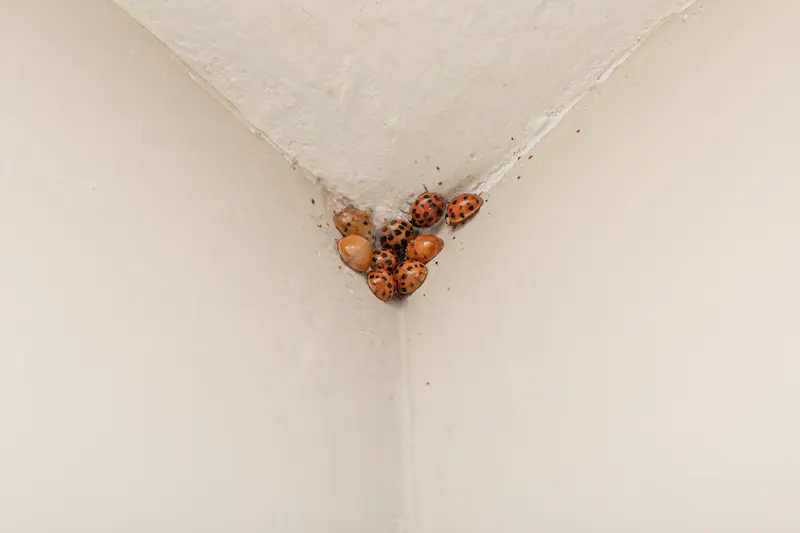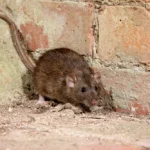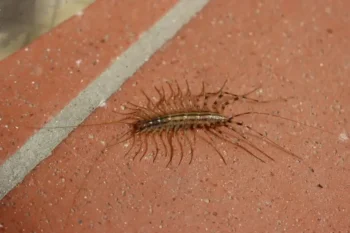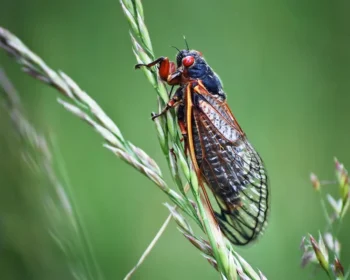
Have you noticed more insects sneaking into your home as the weather cools? It’s not just your imagination. Many pests become more active indoors during the fall, seeking warmth and shelter as outdoor temperatures drop and food sources become scarce. Homes provide a perfect refuge, with consistent warmth and plenty of nooks and crannies for insects to hide.
Some seasonal pests will migrate south or burrow into the ground to survive winter, but others move right inside with you. This survival strategy, called overwintering, allows them to wait out the cold months and reappear in spring. Watching for early warning signs can help you prevent a full-blown infestation later.
Our team at Arrow Exterminating offers professional pest prevention and removal services to keep your home pest-free all winter long. By acting early, you can protect your living spaces and enjoy a comfortable, pest-free season.
Watch Out for These Fall Indoor Pests
No one enjoys seeing bugs crawling across surfaces or hiding in dark corners. Yet the hidden pests often create the most problems, damaging your home as they go. These fall invaders are the ones most likely to seek shelter indoors:
-
Asian Lady Beetles
That small bug crawling along your wall might look like a harmless ladybug, but it could actually be an Asian lady beetle. These beetles are slightly larger than typical ladybugs, often orange or tan, and may not have any spots at all. If you see one, there’s a good chance more are nearby, as they tend to cluster together.
Asian lady beetles can release a yellowish, foul-smelling fluid when they feel threatened. This secretion can leave stubborn stains on walls, curtains, and furniture, signaling that the beetles have taken up residence in your home.
While generally not dangerous, they can cause problems for people with sensitivities. Some may experience eye irritation or mild respiratory reactions. Because these beetles use pheromones to attract each other, even a single intruder can lead to a larger infestation. Prevent problems by sealing cracks and other entry points before fall arrives.
-
Termites
Among household pests in the U.S., termites cause the most destruction. Each year, the cost of repairs and preventive measures can reach up to $30 billion. Subterranean termites, the most harmful species, typically burrow deeper into the ground during fall and winter but are always seeking access points into homes.
These wood-eating insects feed day and night, silently weakening structural components of your house. They don’t just create minor annoyances; they consume the materials that hold your home together. That’s why preventing infestations and catching them early is so important.
Termite activity often goes unnoticed until spring, when the colony is firmly established and damage is severe. Blistered paint, wood that sounds hollow, and small, unexplained holes are all warning signs that termites may be present.
-
Rodents
Squirrels, roof rats, and mice are incredibly agile and excellent climbers. You’ve likely seen them dart along tree branches or walk along fences with ease. With these skills, it’s no surprise they can easily enter attics and set up nests for the season.
Rodents that move indoors bring a host of health and safety concerns. Their droppings and urine can contaminate food, potentially spreading diseases such as hantavirus, salmonella, and leptospirosis. They also gnaw constantly to keep their teeth sharp, which can damage insulation, chew through wires, and even create fire hazards.
The good news is that these pests rarely remain silent. Scratching or gnawing noises from ceilings or walls are often the first clue of an infestation. If you hear these sounds, it’s a strong indication that rodents are present, and it’s time to contact a professional like Arrow Exterminating.
-
Stink Bugs
The Brown Marmorated stink bug is the primary stink bug species invading homes in the U.S. This invasive pest from Asia has a flat, shield-shaped body with brown and gray mottling, and adults range from ¼ to ⅜ inch in length.
When handled or squashed, stink bugs emit a strong, unpleasant odor that can make living spaces uncomfortable. Beyond the smell, infestations may harm houseplants as the bugs feed on stems and leaves.
Stink bugs seek quiet, hidden areas where they won’t be disturbed. Common hiding places include attics, wall cavities, and other out-of-the-way spots. Dead insects in these locations can attract additional pests like carpet beetles.
-
Wasps
When winter sets in, most wasps don’t survive the cold. Their colonies die off, leaving only fertilized queens to endure the season. These queens look for protected spots like hollow logs, tree stumps, or gaps in structures, including your attic.
Wasps are known for being aggressive, and their stings can be extremely painful, sometimes causing serious allergic reactions. They often build nests in hidden areas, remaining unnoticed until someone disturbs them. Taking preventive measures can help you avoid painful stings and unexpected encounters.
Are you confident your attic vents are fully screened? If not, we can help. Our team can inspect your attic and install durable screens to keep wasps, birds, and other wildlife from entering.
-
Armyworms
While many pests invade homes in the fall, armyworms focus their destruction outside. These insects pose a serious threat to Long Island lawns, causing severe damage quickly. Repairing the destruction left behind can take significant time and effort.
Armyworms are most active during late summer and early fall, with peak activity in September and October. They travel in large groups, eating every blade of grass they encounter. A healthy green lawn can quickly turn brown and lifeless, and under ideal conditions, an entire yard can be ruined in less than a week.
It’s important for homeowners to act at the first signs of infestation, such as thinning grass or increased bird activity. A professional lawn care or pest control team can treat the problem before it spreads further. Consistent preventive care helps protect your landscape from these damaging pests.
Keep Your Home Pest-Free This Fall
Once pests make themselves at home in or around your property, removal becomes much more difficult. Taking action early can prevent a full-blown infestation by spring. These prevention and exclusion strategies are the best way to keep fall pests under control:
- Seal Entry Points: Begin by closing up any cracks and gaps around your home. Use caulk on windows and doors, repair damaged screens, and add door sweeps to block common points where pests can enter.
- Maintain Cleanliness: Vacuum your home regularly to remove pests that may have already entered and reduce available food sources that could lure more in.
- Declutter and Protect Indoors: Minimize clutter in basements, attics, and storage areas where pests may hide. Address any moisture issues and store food in airtight containers to prevent attracting insects and rodents.
- Manage Outdoor Vegetation: Keep shrubs, trees, and other plants trimmed back from your home’s exterior. Store firewood at least 20 feet away from the house to limit potential hiding spots for pests.
- Professional Inspection: Schedule a pest inspection in early fall. A seasonal pest control expert can identify vulnerable areas and treat them before pests move in for the winter.
Fall Pest Control You Can Rely On
Dealing with fall pests in your home? Our full-service pest control team can help. For more than 75 years, we’ve proudly served Long Island, keeping homes free from insects and rodents. With expert techniques and a tailored approach, we ensure your property stays protected. Trust us to detect issues early and stop pests before they get out of hand.
Get in touch with Arrow Exterminating for trusted pest control services and a no-cost quote!






